A blinking check engine light is a critical warning that demands immediate attention. Unlike a solid check engine light, which indicates a less urgent issue, a flashing light suggests a severe problem, such as an engine misfire, that could lead to significant damage if ignored. This guide will provide you with essential tips and steps to diagnose and fix the underlying causes of a blinking check engine light and how to fix “blinking check engine light then stops” problem ensuring your vehicle's safety and optimal performance.
What Does a Blinking/Flash Check Engine Light Mean?
A blinking check engine light is a critical warning from your vehicle's onboard computer, indicating a potentially serious issue that needs immediate attention. This light, also known as the malfunction indicator lamp (MIL), usually appears on the dashboard as an engine icon or a “check engine”/“service engine” message.
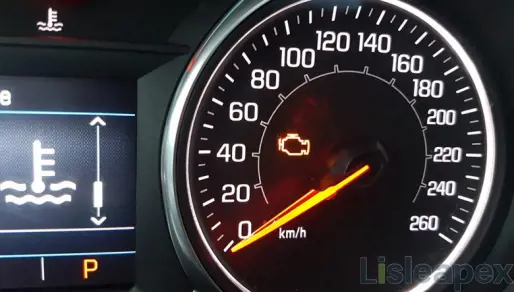
When the check engine light blinks, it typically points to a severe problem like an engine misfire, which can cause significant damage, such as harming the catalytic converter. If you see this light flashing, it's crucial to reduce speed, avoid heavy acceleration, and seek professional help promptly to prevent further damage and ensure your vehicle's safety.
1) Different Types of Blinking/Flash Check Engine Light
The check engine light provides critical insights into the severity of an issue with your vehicle. Understanding the different patterns of illumination can help determine the urgency of the problem:
- Solid Illumination: A steady check engine light generally indicates a significant issue that demands prompt attention. Common causes include critical engine misfires, catalytic converter problems, major fuel system failures, or emission control system malfunctions. Ignoring a solid check engine light can lead to further damage or even a breakdown.
- Intermittent Flashing: If the check engine light flashes briefly and then stops, it suggests a temporary or intermittent issue. This could be due to a minor engine misfire, a loose gas cap, or a sensor malfunction. Although this may not be as severe as a continuously flashing light, it is still important to have the vehicle inspected by a qualified mechanic to address the underlying cause.
- Continuous Flashing: A continuously flashing check engine light signals an emergency situation, such as a severe engine misfire. This condition requires immediate attention to avoid substantial damage to the engine or catalytic converter. Driving in this state is risky and could lead to further complications.
Regardless of the pattern, a flashing check engine light should never be ignored. Safely pull over, turn off the engine, and seek professional assistance to diagnose and resolve the issue to ensure the safe operation of your vehicle.
2) Why is the Check Engine Light Blinking/Flash?
A blinking check engine light is a clear indication of a significant issue within your vehicle's engine or related systems that requires immediate attention. Ignoring this warning can lead to further damage and potential breakdown. Here are some common causes:
Engine Misfire: A severe engine misfire, often accompanied by shaking, is a primary cause of a blinking check engine light. This occurs when the fuel-air mixture in one or more cylinders fails to ignite properly due to faulty ignition coils, spark plugs, fuel injectors, or oxygen sensors.
Catalytic Converter Problem: A malfunctioning catalytic converter can trigger the light to blink. Issues such as a damaged or clogged converter affect the vehicle's emission control system, leading to increased pollution and reduced engine performance.
Fuel System Issue: Problems within the fuel system, including fuel pump failure, malfunctioning fuel injectors, or a clogged fuel filter, can cause a blinking engine light, impacting the engine's ability to receive the proper fuel-air mixture.
Oxygen Sensor Malfunction: Faulty oxygen sensors, which monitor and adjust the oxygen levels in the exhaust system, can lead to improper fuel-air mixture regulation and cause the engine light to blink.
Ignition System Problem: Issues with the ignition system, such as a faulty ignition coil or distributor, can disrupt the proper ignition timing, leading to misfires and triggering the check engine light.
Addressing a blinking check engine light promptly by consulting a qualified mechanic is crucial to diagnosing and resolving the underlying problem, ensuring the safe and efficient operation of your vehicle.
3) Steps to Fix Engine Light Blinking/Flash
A blinking check engine light signals a critical issue in your vehicle's engine or related systems that requires immediate attention. Addressing these problems promptly can prevent further damage and ensure safe vehicle operation. Here are steps to fix common causes of a blinking check engine light:
#1 Engine Misfire:
- Inspect and Replace Ignition Components: Examine the spark plugs, ignition coils, and ignition wires. Replace any components that are worn out or damaged to ensure proper ignition timing and function.
- Check Fuel Injectors: Ensure that fuel injectors are clean and functioning correctly. Clean or replace any faulty injectors to restore proper fuel delivery to the engine.
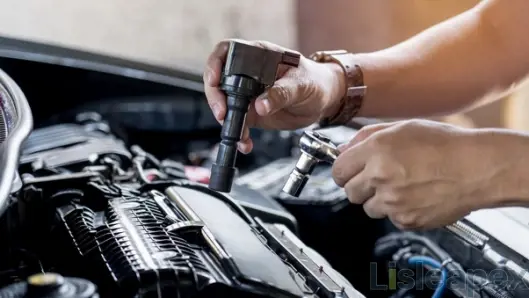
#2 Catalytic Converter Problem:
- Evaluate the Catalytic Converter: Inspect the catalytic converter for signs of damage or clogging. A malfunctioning converter should be replaced to restore the emission control system's efficiency.
- Address Underlying Issues: Problems like engine misfires or sensor malfunctions can damage the catalytic converter. Ensure these issues are fixed to prevent future converter problems.
#3 Fuel System Issue:
- Inspect the Fuel Pump: Check the fuel pump for proper operation. A malfunctioning fuel pump can be replaced to ensure consistent fuel pressure.
- Clean or Replace Fuel Injectors and Filters: Remove and clean clogged fuel injectors or replace them if necessary. Also, replace a clogged fuel filter to maintain proper fuel flow.
#4 Oxygen Sensor Malfunction:
Test and Replace Oxygen Sensors: Use an OBD-II scanner to identify faulty oxygen sensors. Replace any malfunctioning sensors to ensure accurate monitoring and adjustment of the fuel-air mixture.
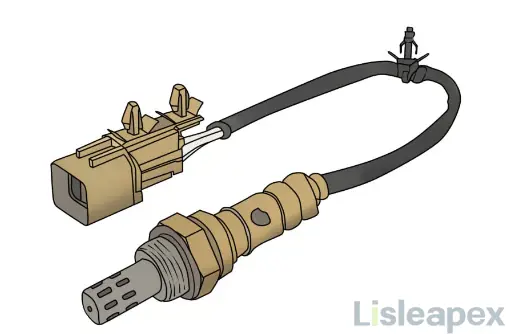
#5 Ignition System Problem:
- Examine Ignition Coils and Distributor: Inspect the ignition coils and distributor for any signs of wear or damage. Replace faulty components to restore proper ignition timing.
- Check Electrical Connections: Ensure all electrical connections within the ignition system are secure and free from corrosion or damage.
After addressing the specific issues, follow these additional steps:
Clear Diagnostic Trouble Codes (DTCs):
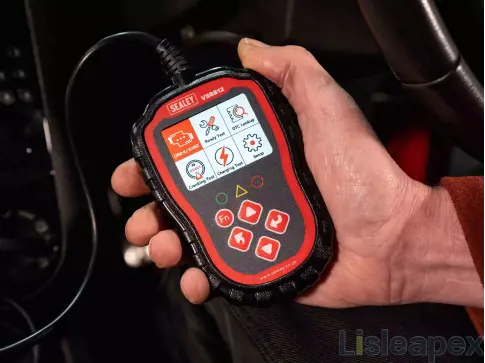
Use an OBD-II scanner to clear any stored DTCs from the vehicle’s onboard diagnostic system. This will reset the check engine light.
Test Drive the Vehicle:
Take the vehicle for a test drive to ensure that the check engine light does not blink again and that the underlying issues have been resolved.
Regular Maintenance:
Follow a regular maintenance schedule to prevent future problems. This includes routine oil changes, air filter replacements, and periodic inspections of the ignition and fuel systems.
What Happens When Blinking Check Engine Light Then Stops?
When the check engine light flashes and then stops, it indicates a significant issue with your vehicle's engine or related components. This warning light, located in the instrument cluster, alerts drivers to errors detected by the Engine Control Module (ECM), typically caused by abnormal sensor data or signal loss.
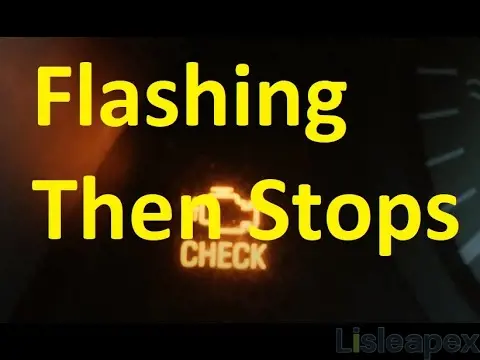
If the check engine light flashes briefly and then ceases, it can imply two scenarios. Firstly, it may result from a reset action, often triggered inadvertently. However, if not reset-related, it signals a critical condition demanding immediate attention. This situation warrants pulling over safely, turning off the vehicle, and arranging for towing to a reputable mechanic. Flashing indicates a severe misfire or potentially catastrophic issues with ignition, fuel timing, or compression, necessitating prompt professional assessment and repair.
1) Detailed Reasons of Blinking Check Engine Light Then Stops
A blinking check engine light followed by its cessation while driving can stem from various underlying issues within your vehicle's engine and associated systems. Here are common reasons:
Faulty Oxygen Sensor(view more sensors):
Malfunctioning oxygen sensors can disrupt fuel injection, leading to increased fuel consumption and compromised combustion efficiency. This issue necessitates prompt sensor replacement to avoid further damage, such as catalytic converter failure.
Loose or Faulty Gas Cap:
A loose or damaged gas cap can trigger the check engine light due to fuel vapor leakage. Physically inspect and ensure the gas cap is securely fitted to prevent this issue.
Malfunctioning Catalytic Converter:
A failing catalytic converter compromises exhaust gas treatment, resulting in harmful emissions and a triggered check engine light. Replacement is necessary, albeit costly, to restore emission control functionality.
Defective Mass Air Flow Sensor:
A faulty mass airflow sensor can disrupt intake air measurement, leading to inaccurate fuel and ignition adjustments. Replacement of the sensor is essential to ensure proper engine operation.
Stuck or Damaged Air Filter Valve Relay:
Faulty air filter valve relays can lead to vaporized gasoline escaping into the environment, triggering engine error codes. Professional diagnosis is required to detect and rectify valve issues.
Damaged Spark Plugs:
Spark plug malfunctions, such as dirt accumulation or damage, can result in weak or mistimed sparks, affecting combustion efficiency and engine performance. Prompt replacement is necessary to address this issue.
Broken Thermostat Valve:
A broken thermostat valve can disrupt coolant circulation, leading to engine overheating and triggering the check engine light. Timely repair or replacement is crucial to prevent severe engine damage.
Faulty Exhaust Gas Recirculation (EGR) System:
Clogged EGR valves or pipelines can impede exhaust gas recirculation, affecting NOx concentration and triggering engine error codes. Professional inspection and cleaning are necessary to rectify EGR system issues.
2) How to Fix Blinking Check Engine Light Then Stops
When your check engine light flashes and then stops, it's crucial to address the underlying issue promptly to ensure your safety and prevent further damage to your vehicle. Here's how to tackle each potential cause:
Faulty Oxygen Sensor:
Replace the malfunctioning oxygen sensor to restore proper fuel injection and combustion efficiency, preventing increased fuel consumption and potential catalytic converter failure.
Loose or Faulty Gas Cap:
Inspect and securely tighten or replace the gas cap to prevent fuel vapor leakage, which triggers the check engine light. Ensure the cap forms a proper seal to maintain optimal fuel tank pressure.
Malfunctioning Catalytic Converter:
Replace the failing catalytic converter to restore emission control functionality and prevent harmful emissions. Although replacement can be costly, it's essential for environmental compliance and engine performance.
Defective Mass Air Flow Sensor:
Install a new mass airflow sensor to accurately measure intake air flow and facilitate correct fuel and ignition adjustments. This ensures optimal engine operation and prevents performance issues.
Stuck or Damaged Air Filter Valve Relay:
Seek professional diagnosis to detect and rectify issues with the air filter valve relay, preventing vaporized gasoline from escaping into the environment and triggering engine error codes.
Damaged Spark Plugs:
Replace worn or damaged spark plugs to restore proper ignition and combustion, preventing efficiency loss, engine vibration, and performance issues associated with mistimed sparks.
Broken Thermostat Valve:
Repair or replace the broken thermostat valve to regulate coolant circulation and prevent engine overheating. Timely intervention avoids severe engine damage and ensures safe operation.
Faulty Exhaust Gas Recirculation (EGR) System:
Schedule a professional inspection and cleaning of the EGR valves or pipelines to address clogs and restore proper exhaust gas recirculation. This prevents NOx concentration issues and resolves engine error codes.
Why it is Important to Fix Blinking Check Engine Light Then Stops Immediately
Driving with a flashing check engine light is like playing with fire—literally. It's a clear signal that something serious is amiss under the hood, potentially leading to overheating or even engine failure.
Imagine cruising down the road when suddenly, your engine misfires. Your car loses power, making you a hazard to others on the road. Ignoring this warning light could lead to catastrophic consequences, not just for your vehicle but for your safety and others'.
Don't be tempted to brush it off. Pull over safely, turn off the engine, and get it checked out immediately. Sure, towing might be costly, but it's a small price to pay compared to the repairs you might face if you keep driving. Plus, it's not just about money—it's about keeping everyone safe on the road.
Think of your catalytic converter as a shield against harmful emissions. If it fails due to prolonged engine misfires, it could ignite, causing even more damage and expense. Don't let it get to that point. Address the issue promptly to avoid further complications.
Remember, one in seven drivers ignores their check engine light, but you don't have to be one of them. Don't wait until it's too late. Seek professional help, like Auto Works of Brandon, to diagnose and fix the problem before it escalates. Your safety and the safety of others on the road depend on it.
Tips to Fix Blinking Check Engine Light Then Stops Effectively
Fixing a blinking or flashing check engine light requires prompt attention to prevent further damage to your vehicle. Here are some tips to address this issue effectively:
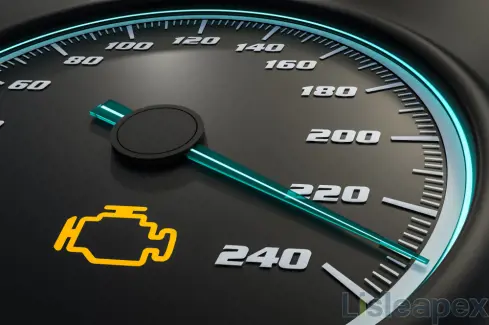
- Take Immediate Action: If your check engine light is flashing, it indicates a severe problem that requires immediate attention. Safely pull over, turn off the engine, and avoid driving further to prevent potential damage.
- Check the Gas Cap: A loose or faulty gas cap can trigger the check engine light. Ensure the gas cap is tightened properly, and if damaged, consider replacing it.
- Retrieve Diagnostic Trouble Codes (DTCs): Use an OBD-II scanner to retrieve diagnostic trouble codes (DTCs) from the vehicle's onboard diagnostic system. These codes provide specific information about the detected problem, aiding in the diagnosis and repair process.
- Inspect Components: Perform a visual inspection of engine components, including spark plugs, ignition coils, oxygen sensors, and the catalytic converter. Look for signs of damage, corrosion, or wear and address any issues accordingly.
- Address Fuel System Issues: Problems with the fuel system, such as a clogged fuel injector or malfunctioning fuel pump, can trigger a blinking check engine light. Address any fuel system issues identified during inspection.
- Replace Faulty Sensors: Malfunctioning sensors, such as oxygen sensors or mass airflow sensors, can cause the check engine light to flash. If any faulty sensors are identified, replace them as needed.
- Clear DTCs and Test Drive: After addressing the identified issues, use the OBD-II scanner to clear DTCs and take the vehicle for a test drive to ensure the problem has been resolved and the check engine light no longer flashes.
- Regular Maintenance: Adhere to regular maintenance schedules, including oil changes, air filter replacements, and spark plug replacements, to prevent future issues and maintain optimal vehicle performance.
- Seek Professional Help: If you're unsure or unable to address the issue yourself, seek the assistance of a qualified mechanic or auto repair shop. They have the expertise and tools to diagnose and repair the problem effectively.
By following these tips and addressing the underlying issues promptly, you can resolve a blinking or flashing check engine light and ensure the continued safe operation of your vehicle.
Conclusion
Addressing a blinking check engine light promptly is crucial to prevent further damage to your vehicle and ensure your safety on the road. By following the steps outlined in this guide, from checking the gas cap to inspecting engine components and using an OBD-II scanner, you can effectively diagnose and resolve the issues as “blinking check engine light then stops” causing the warning light.
Regular maintenance and timely repairs are key to maintaining your vehicle’s health. If you're ever in doubt, seek professional assistance to ensure the problem is properly fixed. Don’t ignore the warning—take action to keep your vehicle running smoothly and safely.
FAQ
-
What does a blinking check engine light indicate?
A blinking or flashing check engine light typically indicates a severe engine problem, such as a misfire, that requires immediate attention. It is a warning that continuing to drive may cause significant damage to the engine or catalytic converter.
-
Is it safe to drive with a blinking check engine light?
No, it is not safe to drive with a blinking check engine light. It indicates a serious issue that could lead to engine damage or pose safety risks. You should stop driving as soon as it is safe to do so and have the vehicle inspected by a professional.
-
Why does the check engine light blink instead of staying solid?
A blinking check engine light is designed to alert the driver to a more urgent problem compared to a solid check engine light. While a solid light indicates a need for service, a blinking light suggests a condition that could cause immediate and severe.
-
What should I do if the check engine light blinks and then stops?
If the check engine light blinks and then stops, you should immediately reduce speed and avoid heavy acceleration or high engine loads. It is advisable to pull over to a safe location as soon as possible and turn off the engine. Then, check the vehicle's owner's manual for guidance and consider contacting a mechanic or automotive service center for assistance.
Stay updated with Lisleapex by signing up for the newsletter


 Congratulations On Your Successful Submission
Congratulations On Your Successful Submission
 Submission Failure
Submission Failure